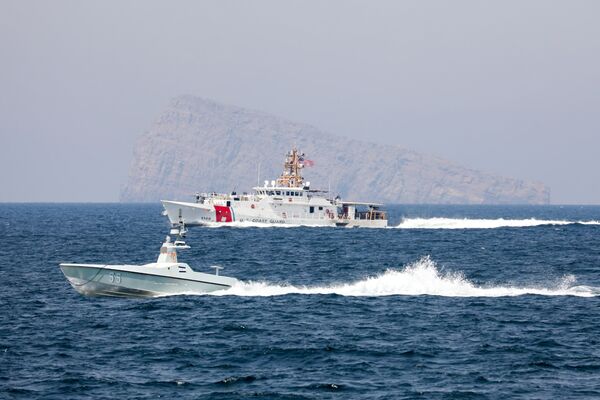
USCGC John Scheuerman (WPC 1146) transits the Strait of Hormuz with an L3Harris Arabian Fox Mast-13 unmanned surface vessel on 19 April. (USCG)
A US Navy (USN) unmanned surface vessel (USV) has transited the Strait of Hormuz for the first time, marking another milestone in the service's efforts to integrate unmanned systems and artificial intelligence (AI) into maritime operations in the Middle East.
The USV, an Arabian Fox Mast-13 vessel operated by the US Fifth Fleet's Task Force 59, completed the transit on 19 April accompanied by two US Coast Guard (USCG) Sentinel-class fast response cutters. Developed by L3Harris, the Mast-13 is a 13 m long high-speed USV capable of fully autonomous navigation.
In a statement, the USN said the USV, escorted by USCGC Charles Moulthrope (WPC 1141) and USCGC John Scheuerman (WPC 1146), sailed south from the Arabian Gulf and successfully navigated its way through the Strait of Hormuz – which at its narrowest is just 39 km wide – before entering the Gulf of Oman. The three vessels were operating in support of the International Maritime Security Construct, an 11-country coalition led by the US that focuses on maritime operations near key waterways in the Middle East.
In December 2022, Task Force 59 achieved another milestone in collaboration with the USCG when it successfully launched and recovered an Aerovel Flexrotor tactical unmanned aerial vehicle (UAV) from the service's Sentinel-class cutter USCGC Emlen Tunnell (WPC 1145) while operating in the Gulf. The UAV launch, which was conducted during exercise ‘Digital Horizon', marked Task Force 59's first from a USCG vessel at the time.
Looking to read the full article?
Gain unlimited access to Janes news and more...







